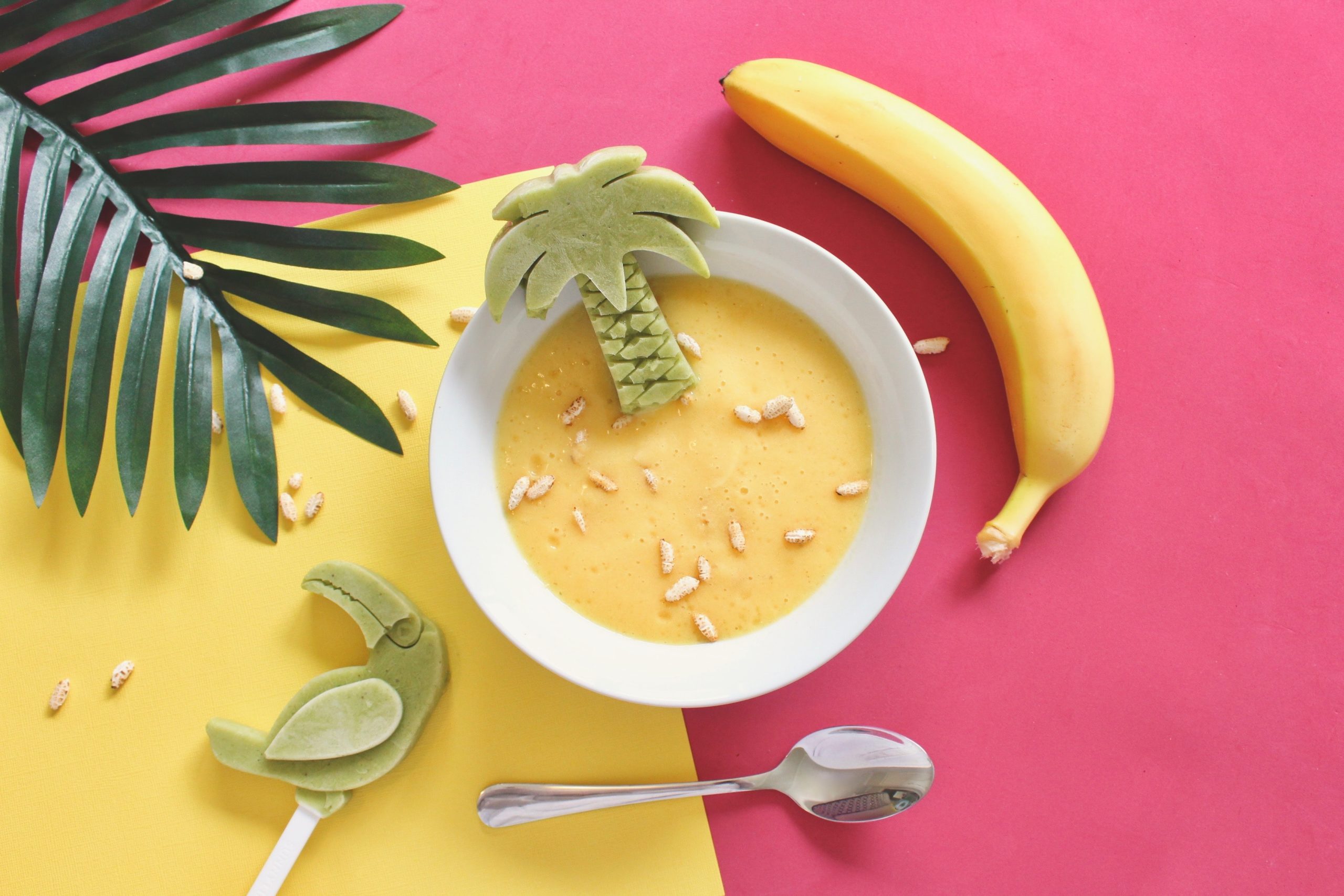
Starting solid foods is a big step for your baby. At around ages 4 months to 6 months, most babies are ready to begin eating solid foods as a complement to breast-feeding or formula-feeding. If you are a first-time mum, the options available for baby’s first foods can be overwhelming! Here, we highlight 4 common baby food myths and the truth behind them.
Myth #1: I need new equipment and baby cookbooks
No need for panic if you not have the latest equipment or any lengthy baby cookbooks. A good blender is all you really need. Steam veggies until they are cooked and soft enough to throw in the blender to puree. A hand blender does the trick most easily. Most fruit do not need to be cooked prior to puree, with exception of some peeling/seeding if necessary.
Myth #2: I’ll need special storage containers
The secret to this is – a standard ice cube tray. Once pureed, if you’re not immediately feeding it to baby, fill up the pureed food into ice cube tray to freeze. Once the cubes are frozen, pop into labeled and dated freezer bags. Typical ice cubes are 1oz. Thaw cubes overnight in the fridge and either steam lightly or heat briefly in the microwave. Remember to test the temperature of the food before serving to baby.
Fresh, homemade fruit/veggie purees should be eaten within 48 hours if stored in the refrigerator. Frozen can store up to 3-6 months but ideally within 1-3 months. Remember: Do not save any leftover baby food that has come in contact with baby’s spoon, hands, or mouth as this may harbour harmful bacteria
Myth #3: Commercial baby food is cheaper than home-made puree
$2 for a 110g bottled jar and about $4 for a 120g pouch of commercial baby food may not seem expensive. But when compared to $1 for a bag of 500g carrots (which can make almost 4x the amount of commercial baby), it can be much more cost effective to make it at home.
There is also less food waste as well, thawing 1-2 frozen ice cubes at a time based on baby’s appetite vs opening a 110g container.
Myth #4: commercial baby food is just as nutritious
In terms of nutrition, there is not much difference between commercial vs home-made baby food; it boils down to personal choice. For commercial baby food, it is important to read labels when buying commercial baby food to make sure there is no added sugar and salt.
For home-made baby food purees, the advantage is that it allows you to have control over all the ingredients and flavours frequently eaten by your family, without added preservatives, salt or sugar. This is especially true in our unique Asian diets where most, if not all commercial baby foods are based on a Western diet. Furthermore, home-made baby food also allows the person preparing the food to avoid any foods that may cause allergic reactions.
Myth #5: juice is good for my baby
Babies do not need juice. Babies younger than 12 months should not be given juice. After 12 months of age (up to 3 years of age), give only 100% fruit juice and no more than 120 ml a day. Offer it only in a cup, not in a bottle. Juice reduces the appetite for other more nutritious foods as it fills up the baby’s tummy. Too much juice can also cause diarrhoea or excessive weight gain.
What changes can I expect after my baby starts solids?
When your baby starts eating solid foods, you can expect his stools to change – they become more solid, variable in colour and have a much stronger odour.
For example, peas and other green vegetables may turn the stool a deep-green color; beetroot and red dragonfruit may make stool and urine red. The stools might also contain undigested pieces of food, especially hulls of corn, skin of tomatoes or other vegetables. All of this is normal as your baby’s digestive system is still immature and needs time before it can fully process these new foods.
Weaning recipes for the first year

If you’re ready to make your baby food, check out these recipes:
Banana and avocado puree
- Halve the avocado, remove the stone and scoop out the centre. Put into baby’s bowl.
- Add the banana and mash together with the avocado.
- If your baby is already used to purées, you may want to keep this a chunkier consistency.
- Serve immediately
Banana puree
- ½ small ripe banana
- 2-3 tbsp of iron-fortified baby cereal
- Peel banana and cut into small chunks. Mash with fork until smooth.
- Mix in baby cereal and serve immediately. If puree is too dry, add in 2 tbsp of boiled, cooled water until a puree consistency is reached.
Pear puree (great for constipation)
- 1 small ripe green pear
- Wash, peel and cut into chunks to avoid seeds.
- Blend until smooth using a hand-held blender or food processor.
- If not immediately serving, transfer to ice cube trays to freeze overnight.
- Once frozen, cubes can be placed in label and dated freezer bags. May be stored in freezer and used within 1-3 months.
Tip: Pears tend to be a bit runny, so there is typically no need to add additional liquid to blend.
Sweet potato puree
- Place sweet potatoes into a steamer basket.
- Cover and steam for 8 minutes. Let cool slightly.
- Carefully peel off the skin, and blend in a food processor or using a hand-blender until smooth. If too thick, add a splash of baby’s milk and puree until smooth or desired consistency.
- Serve one portion immediately. For the remainder portions, divide between small containers or ice cube trays and freeze.
- Once frozen, cubes can be placed in label and dated freezer bags. May be stored in freezer and used within 1-3 months.
Tip: Steaming, instead of boiling the sweet potatoes help retain the water-soluble vitamins.
Fish, cauliflower and potato puree
- 1 medium baking potato (washed clean)
- 1 small piece white fish fillet (e.g. cod or haddock), about 150g
- ½ small cauliflower, cut into florets
- A splash of milk
- Place potato (with skin on) and cauliflower into a steamer basket.
- Cover and steam for around 8 minutes or until tender.
- Steam fish for about 10 minutes or until opaque and cooked through.
- Once cooked, halve the potato and scoop out the filling.
- Flake the fish, removing any bones and discarding the skin.
- Blend cauliflower, potato and fish. Add a splash of baby’s usual milk if preferred, until desired consistency.
Tip: Steaming potato with skin on keeps the nutrients intact.

Leave a Reply